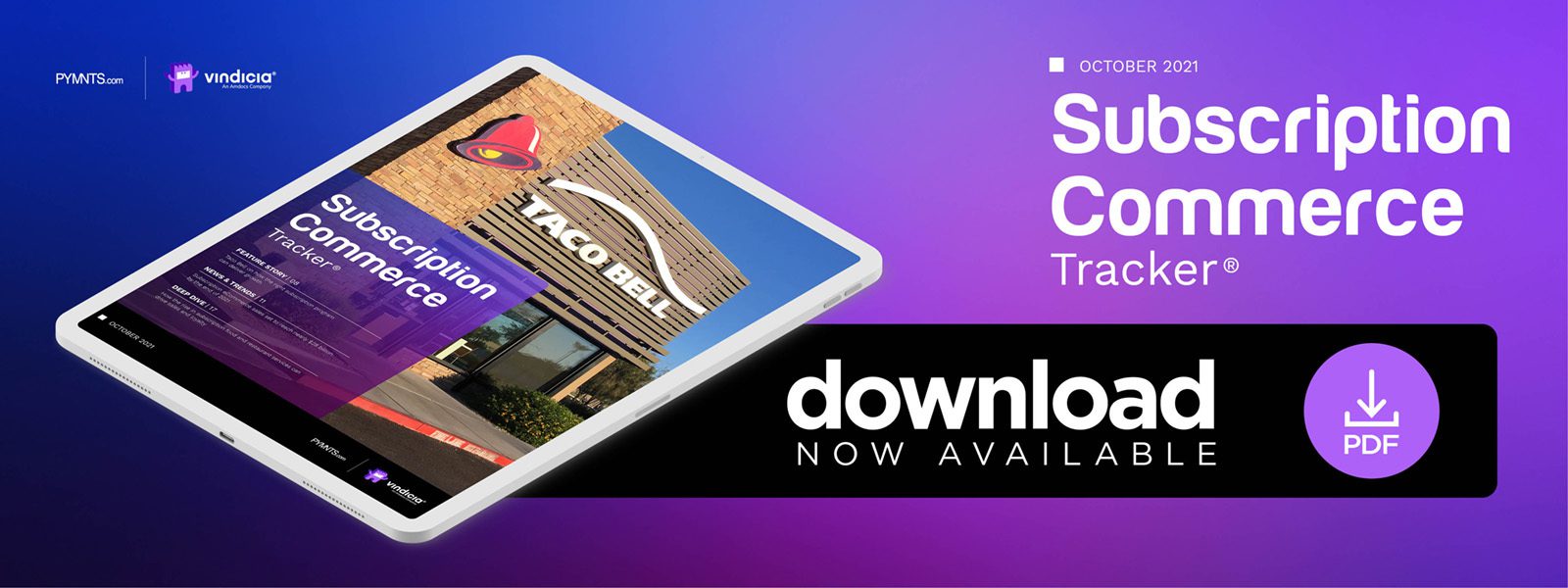Taco Bell on How the Right Subscription Program Can Deliver Growth

Restaurants have experimented with creative approaches to survive unparalleled adversity during the pandemic.
Some quickly went digital with contactless ordering, payments, delivery and takeout to respond to dining room closures and social distancing mandates, while others moved their tables and chairs outdoors. One relatively novel approach now gaining ground is the restaurant subscription, which provides merchants with a consistent source of revenue.
Consumers have demonstrated their comfort with this service model, as illustrated by Amazon Prime, Netflix, Hulu, Dollar Shave Club and Blue Apron. The resulting subscription economy has grown more than 435% since 2012, according to recent data. One 2020 survey found that 55% of New York residents would consider subscribing to a favorite restaurant and that 5% would do so just to help it stay afloat.
Panera Bread and Olive Garden have well-established subscription programs, and Pret a Manger, a London-based cafe with locations in the U.S., joined the procession in September. California-based quick-service restaurant (QSR) Taco Bell launched the Taco Lover’s Pass last month, a trial subscription plan available through Nov. 24 at some locations in Tucson, Arizona. The 30-day trial allows customers to redeem one taco per day for a cost of $5 to $10 per pass, depending on the user’s location.
“The Taco Lover’s Pass is the latest addition to the brand’s digital innovation journey,” Taco Bell Chief Digital Officer Zipporah Allen told PYMNTS. “In the subscription economy, we’ve seen entrants [such as] meal kit companies and fashion brands and thought it would be exciting to merge that subscription-style offering with our iconic tacos.”
Allen declined to say how many customers have signed up for the service so far, but she said the response has been more than encouraging.
“[We are] thrilled with the positive reception the Taco Lover’s Pass has received,” she said.
Subscription Model Makes Sense for QSRs
Allen explained that the subscription offering was designed to boost foot traffic and drive customer engagement as the QSR sector undergoes an accelerated digital transformation. The pass aims to reward Taco Bell’s most loyal diners and meet the needs of customers who seek personalized, exclusive digital brand experiences.
The subscription program features easy enrollment and promises a seamless customer experience from start to finish, she added. To purchase the Taco Lover’s Pass, users add the pass to their carts from the “Online Exclusives” section of the Taco Bell app menu. The daily pass selections from which customers can choose include the Crunchy Taco, Spicy Potato Soft Taco and Doritos Locos Tacos Supreme.
The pilot was the brainchild of a creative collaboration with franchisee partners in the Tucson area focused on driving growth through digital engagement.
“Our fans and team members have been the guiding force behind the decisions we’ve made, especially in the last year, which has played a significant role in Taco Bell’s digital volume growth,” Allen said. “We’ve really focused on how our digital advancements can help better the customer and team member experience. We know our fans are eager for convenience and reliability, two aspects we will continue to deliver on within our digital platforms.”
Still, offering subscription services is no guarantee of success for restaurants. Just ask Burger King, which abandoned its $5 monthly coffee subscription offer, and Cumberland Farms, whose $25-per-month coffee “Cup-scription” program was dropped after a six-month run.
One possible cause for such failures is an overly cautious approach to offerings. Burger King’s program allowed customers to redeem only one small cup of coffee per day, which may not have been enough to convert fans of other brands such as Starbucks or McDonald’s. Consumers also might deem some subscription programs as priced too high to yield value.
Industry analysts nevertheless say the subscription model makes perfect sense for QSRs. In addition to incentivizing app and restaurant traffic, these programs can capture specific details about customers’ ordering preferences that can be used to build brand loyalty. PYMNTS data showed that 57% of loyalty program guests would spend more if restaurants offered the programs, and other research indicated that increasing customer retention rates by just 5% could lift restaurant profits between 25% and 95%.
Smart application of the subscription model has much to offer QSRs such as Taco Bell. Done correctly, subscriptions can fulfill customers’ requirements for value and convenience while providing predictability for restaurants through good times and bad.
